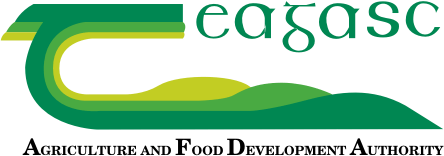08 June 2022
Grass10 Newsletter – 7th June 2022
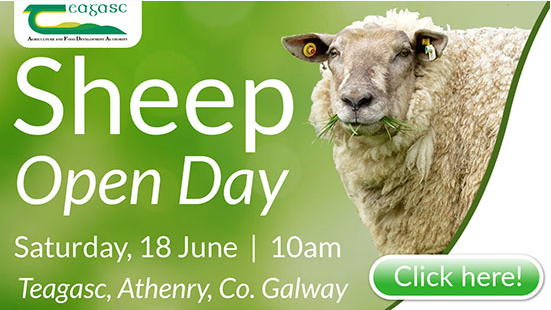
This week’s Grass10 Newsletter includes; Grass10 featured farmer-Oisin Gallen, Co. Donegal; the clover reporter with Kevin Moran plus Grass10 weekly tips on fertiliser for 2nd cut silage; weekly grass checklist; grass growth predictions, PBI figures, an emphasis on lime & the Teagasc Sheep Open Day
199th Edition – 7th June 2022
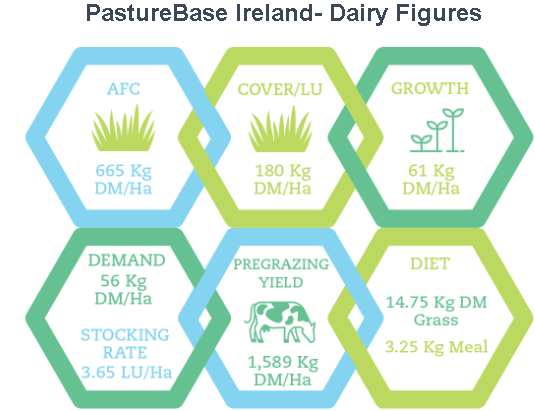
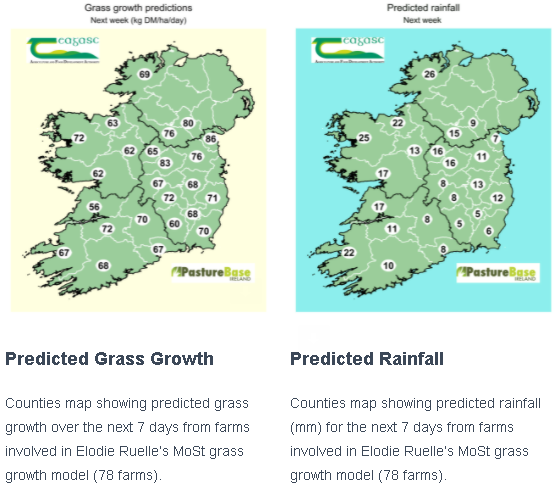
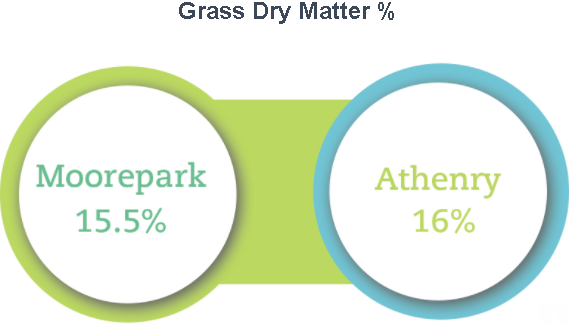
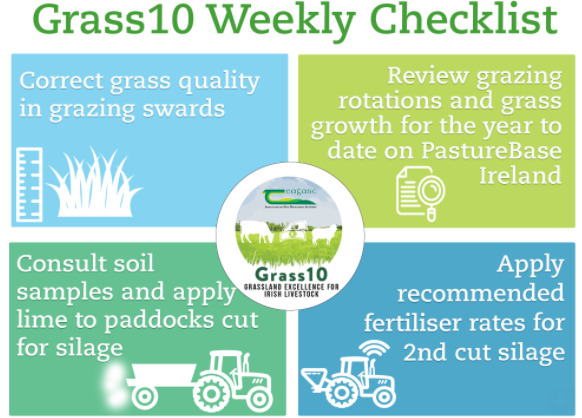
Grass10 Weekly Tips
Correct grass quality in grazing swards
May brought with it very high grass growth rates which led to high pregrazing yields, even with surplus removed. Letting paddocks ‘bulk-up’ in the last rotation before cutting has led to low grass supply in some cases. Also some paddocks which weren’t grazed out to 4cm during this period have now become stemmy with the onset of grass heading dates. Grass quality is poorer in these paddocks even at the ideal pregrazing yield (~1400 KgDM/ha). The first priority must be to remove paddocks with poor grass quality as high quality silage if there is surplus grass on the farm (i.e. cover/cow is >180 KgDM/Cow, or more than 14 days ahead on drystock farms). Where no surplus is present the options are; bale-out 1-2 paddocks in the next rotation or top 1-2 paddocks after grazing. It is important not to do too much together or a deficit may form in the grass wedge. Avoid topping/mowing if growth is slow. Apply 0.75-1u N/ac per day (15-20u N/ac per 20-day rotation) to maintain grass quality.
Review grazing rotations and grass yield
Farms aiming to achieve the Grass10 targets of growing 14 T DM/ha and reaching 10 grazings per paddock should check their PastureBase accounts to review their grazing rotations and annual tonnage to date. It has been 60 days since early April meaning many farms should have completed 4 rotations (1 in spring plus 3 x 20-day rotations), and be on the 5th rotation now. Over the same rotations, paddocks should have between 5.0-5.5 T DM/ha grown. You can access this information by opening the ‘Reports’ tab on the left hand menu and click into ‘Annual Tonnage’. You can filter dates and number of measurements at the top to compare different years. Ensure silage yields have been added to paddocks. Aim to get another 3 grazing rotations over the next 60 days to bring you up to early-mid August.
Apply lime to paddocks that have been cut for surplus bales & 1st cut silage
With an increased focus on incorporating clover & high fertiliser prices, 2022 is the year to correct pH across your farm. Research shows that liming acidic soils increases grass production by 1 + tonne of DM/ha and is the cheapest fertiliser you can buy- it releases N, P, K and S from the soil. Consult your soil samples and make a plan! See the graphic below on some of the solutions to the common barriers that stop us spreading lime throughout the year.
Apply recommended fertiliser rates for 2nd cut silage
Apply 60 – 70 Kg/Ha (46-56 units per acre) of nitrogen + 2-2500 gallons of slurry per acre for 2nd cut silage. It is also important to apply 8-10 units of S to maximise DM yield and nitrogen response. In the absence of slurry apply 2 bags per acre of 0-7-30 to satisfy P+K requirements. This would be expected to grow 4-5 T DM/ha
Grass10 Featured Farmer
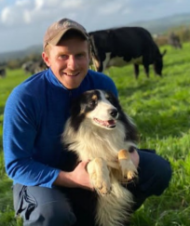 Oisin Gallen, Co. Donegal
Oisin Gallen, Co. Donegal
Oisin Gallen milks 86 cows on 30 Ha milking platform in Ramelton, Co. Donegal. Oisin is a new entrant, setting up in 2020. Oisin is also the host of the Grass10 grazing discussion group in Donegal. Grass quality is Oisin’s main focus at the minute as we move through early June.
Don’t forget about Lime!
All too often we wait to late in the year to apply lime and the opportunity is lost due to wet soil conditions. Many 1st cut crops have been cut across the country and surplus bales have been taken which is a great opportunity to apply lime to bare ground. Some of the common barriers to lime application and there solutions are outlined below.
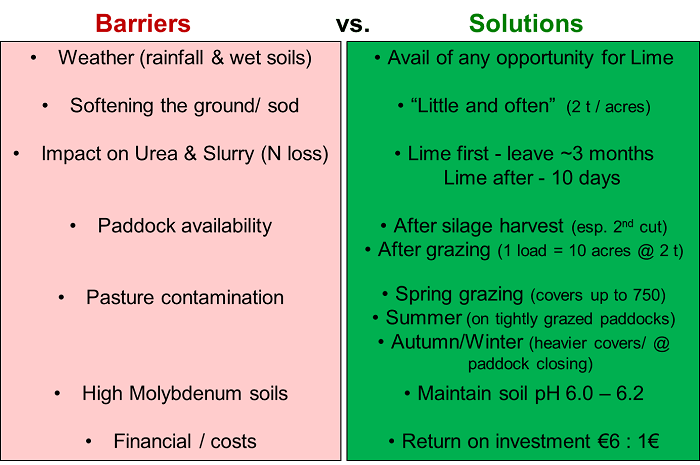
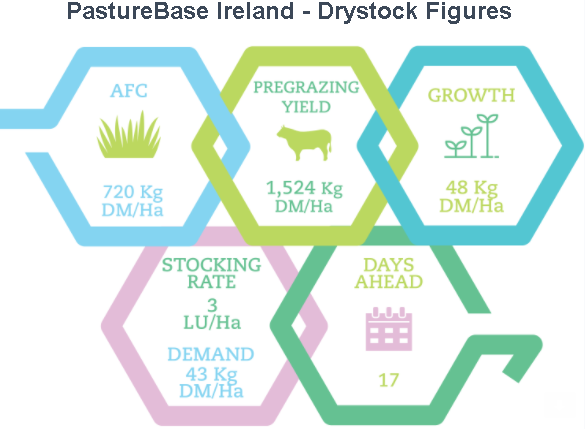
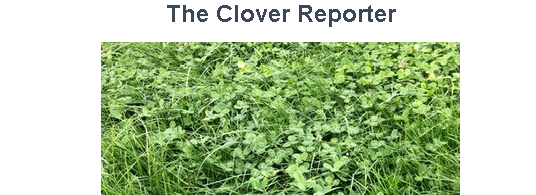
 Kevin Moran, Co. Galway
Kevin Moran, Co. Galway
This section will give weekly reports and videos from farmers who have a lot of clover established on their farms.
This week, dairy farmer, Kevin Moran gives an update on his grazing and fertiliser management to aid clover establishment over the summer months

The Teagasc Sheep Open Day will take place on Saturday 18th June at 10 am. Take the opportunity to review the latest research and technical advice from the Teagasc Sheep programme and its practical application at farm level. The grassland focus will be on clover incorporation and grassland management to maximise growth while also looking at fertiliser costs and silage budgets.
Click below for further information.
Sign up for weekly grass 10 newsletter

